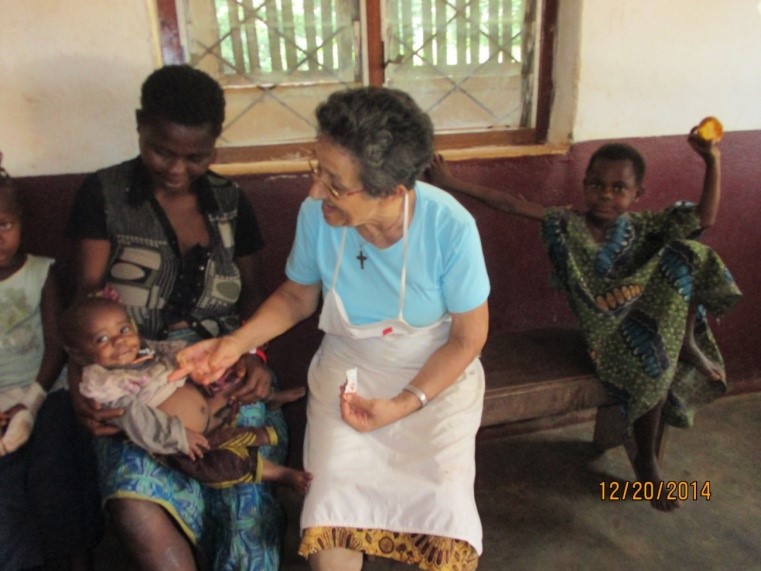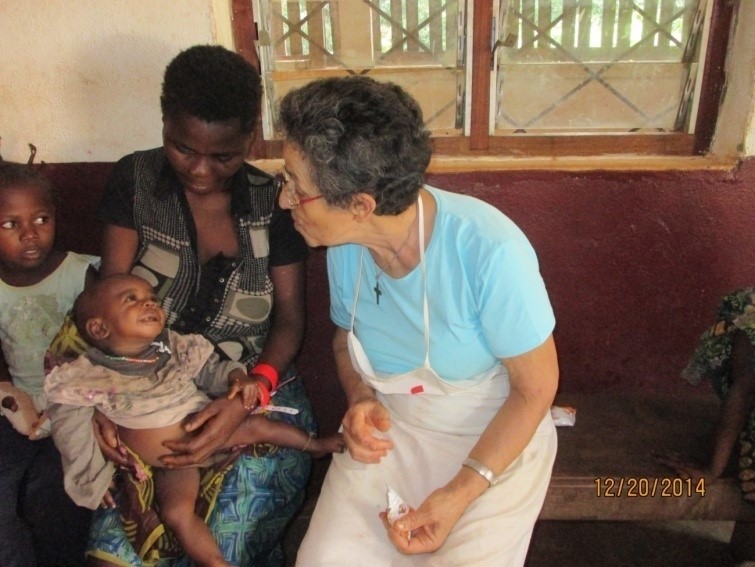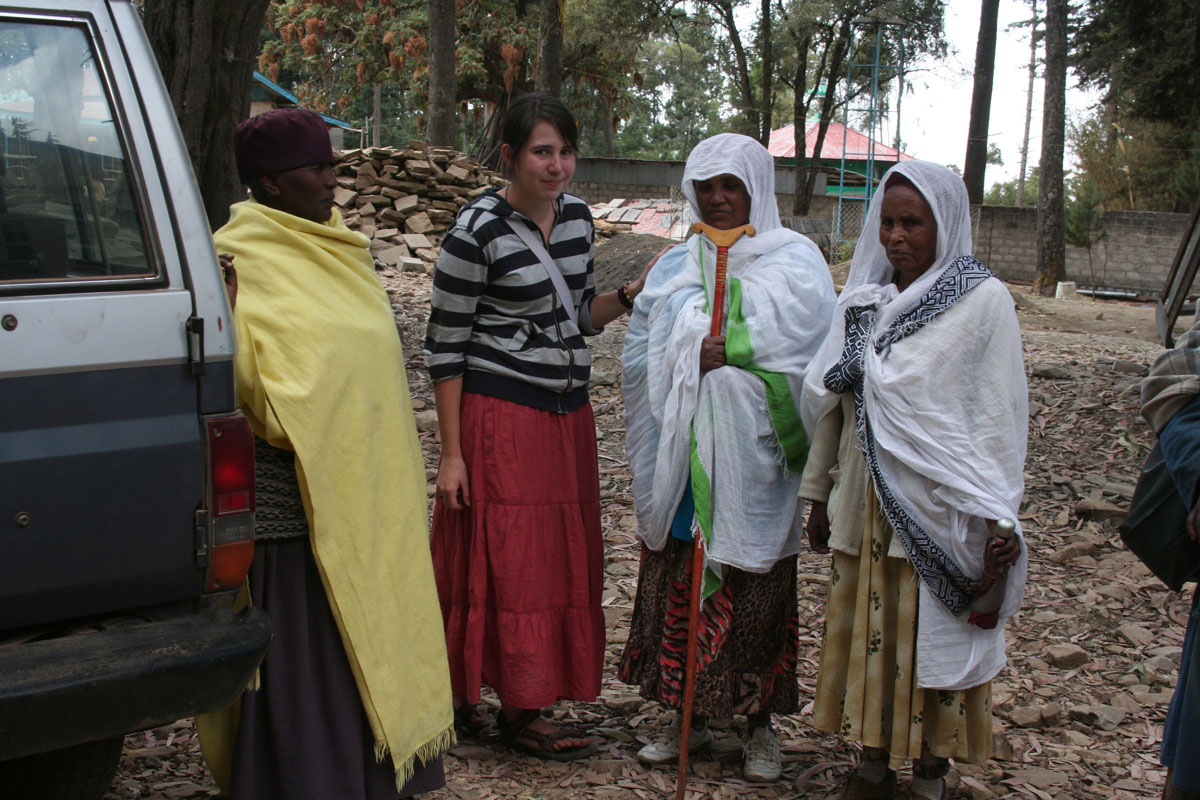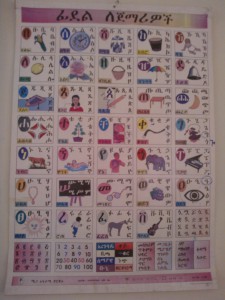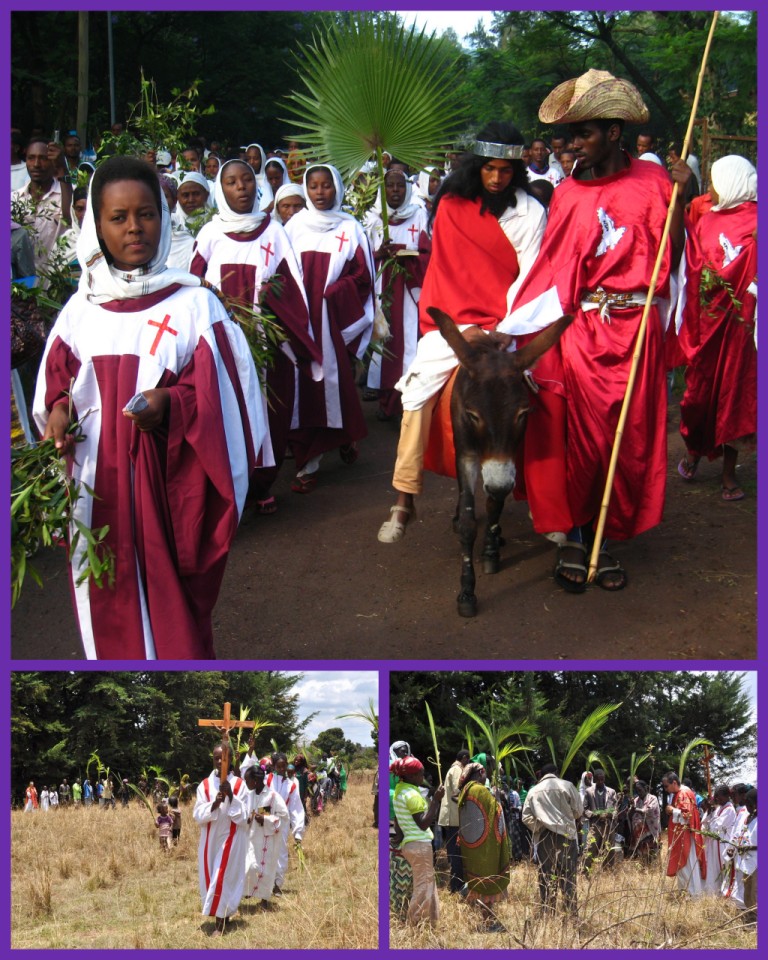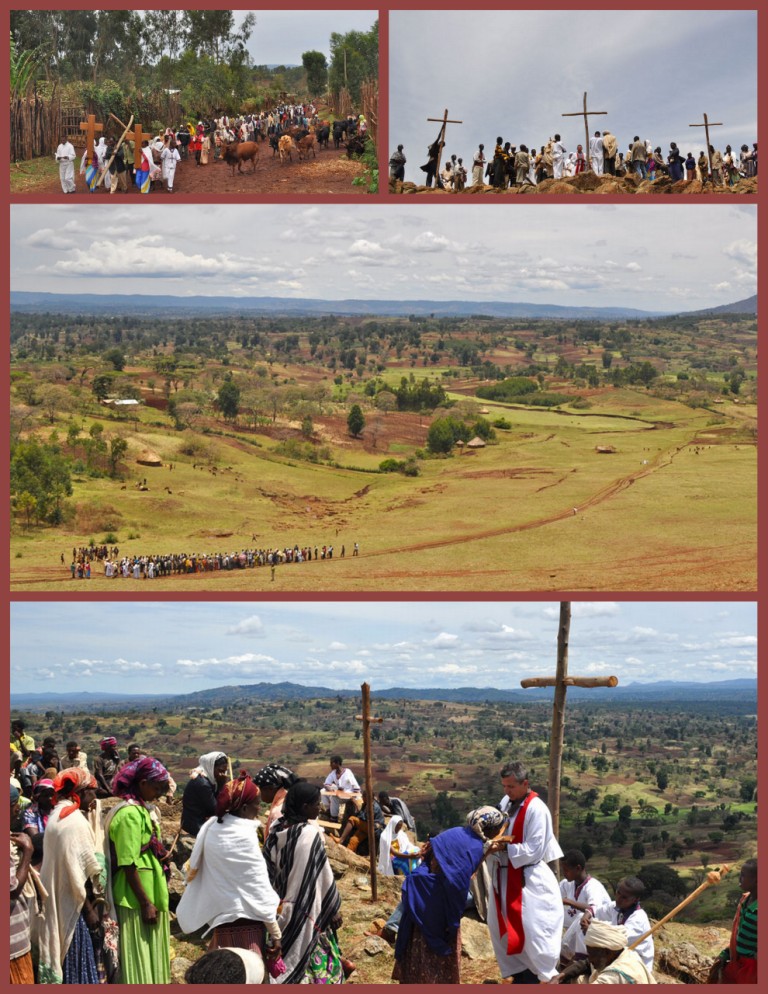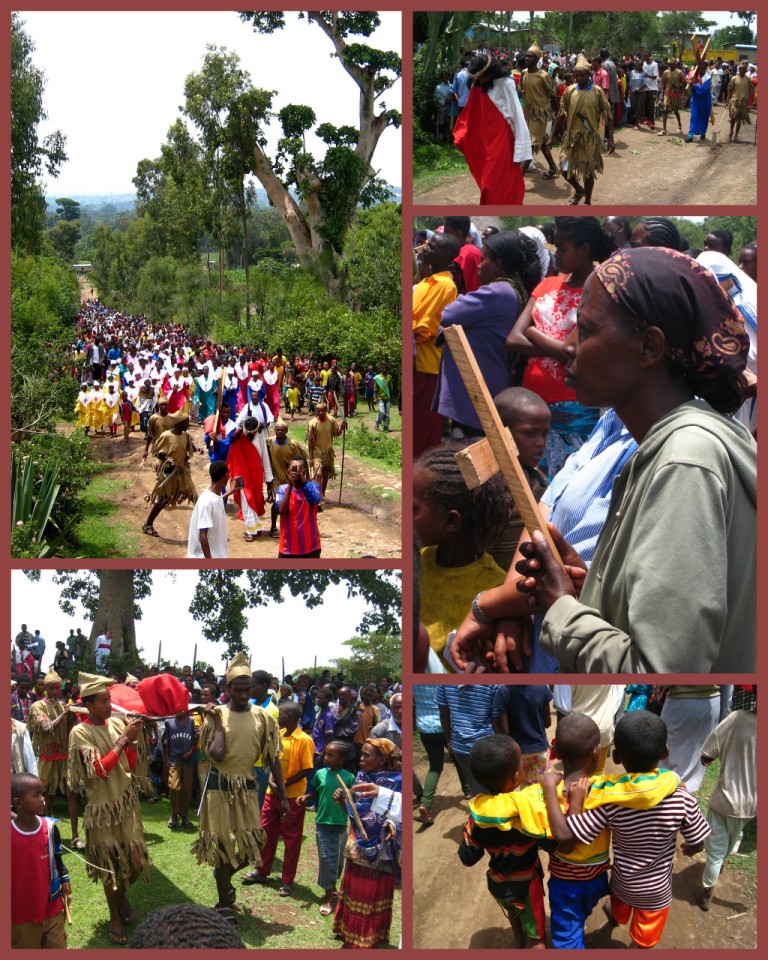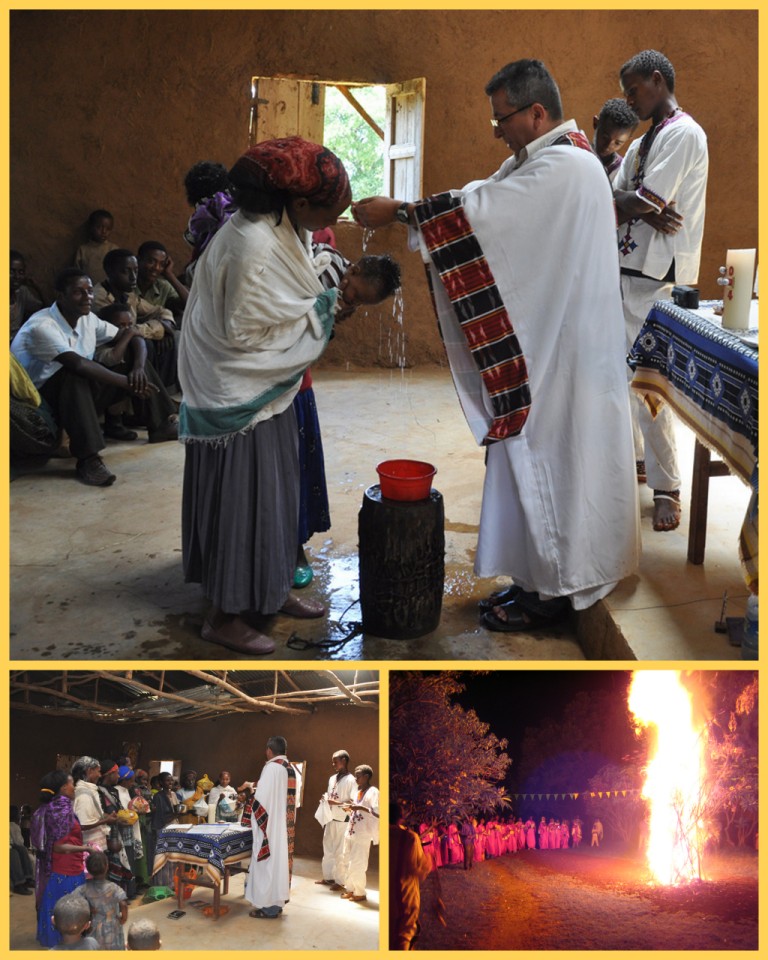Our Lay Community has lived in St. Jude for few months. We work here, but we also live with mothers and children. In our orphanage live more than 130 children of different ages. Over 40 children are disabled to varying degrees, including deaf and blind children, children with cerebral palsy, children suffering from paraplegia and two young that have had various accidents. Also children with HIV and tuberculosis live here in St. Jude. Other children, although healthy in physically sense, they are sick in the spiritual sense- after the experience of rejection from family and experience of the war.
Despite all these diseases and difficult experiences our children are full of life, joy and smile. Every morning we hear their play, laughter and singing. Our children are simply made for inventing new games, especially for making toys out of nothing. They can find a piece of cardboard, a circle and a stick and a new “modern” racing car is rushing through our compound. The old tires are the best toys for them- turning them into racing gives them an extraordinary joy. However, girls really like to play in the imitation of mothers. They find a teddy bear, they quickly wear him on their back and pretend to have a child. It’s better when they find a piece of material to attach the bear to the back and keep their hands free, then it’s called “byelo”.
Older children help mothers in their homes. The girls learn how to take care of the house, cook typical Acoli dishes like “malakwan” or “boo”. The boys help in the store where we keep food- corn, rice and different varieties of beans. That’s all during the holiday. When the school stars most of them attend classes from 8:00 a.m. until 5:00 p.m.
The life of children with disabilities is more monotonous. We try to enliven it. During the day we take them for a short walk in the yard, they have rehabilitation, we play with them in a special room with toys to awake their imagination and change scenery. And despite that some of them have a high degree of disability they have learnt to recognise us. We also recognise their interest, for example Gerard likes tractor coming back from the farm. Then he touches the tires, watches how the cabin looks like. While Geoffrey likes when you stroke him on the cheeks. Bridget smiles when you tell her “good morning my beautiful Bridget”. Our children are full of joy and show it through smile, some even scream and in their eyes we can see friendship and trust which put in us.
Our life here is focused on the children, the time passes very quickly, but sometimes it happens something what “freezes” us for some time. More than one month ago, Isaac died. Isaac was a little boy with disability. He loved when you carried him to exhibit his face to the wind to feel the brush. He had an unusual smile. When he was carried he clung and when you put it back to the wheelchair he clenched his small lips-like a warrior-so as not to cry. Today he is gone from us but this experience has stuck in our hearts.
Every new day begins the same way, full of energy we face new challenges. In the evening we thank God in our small house chapel for the strength and love that we received. Tired but happy, we look forward to a new day.
CLM in Gulu-Uganda





